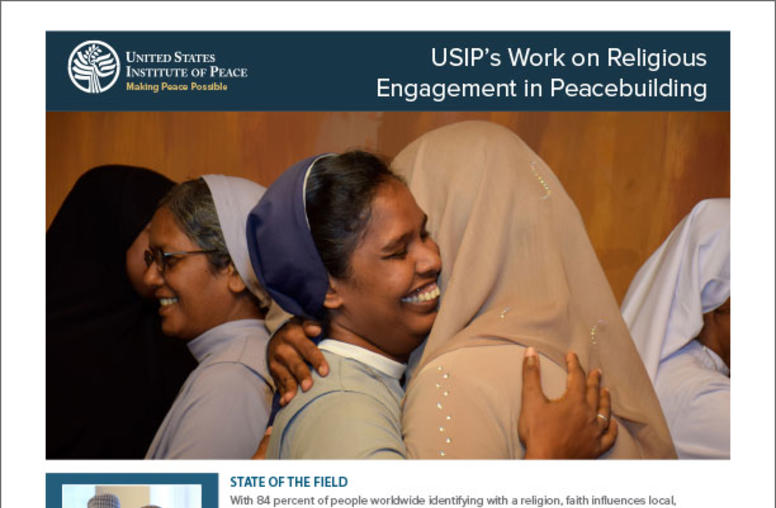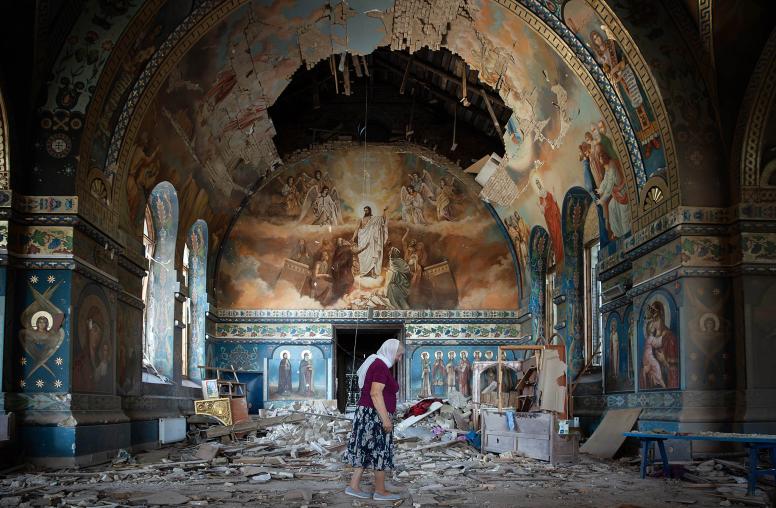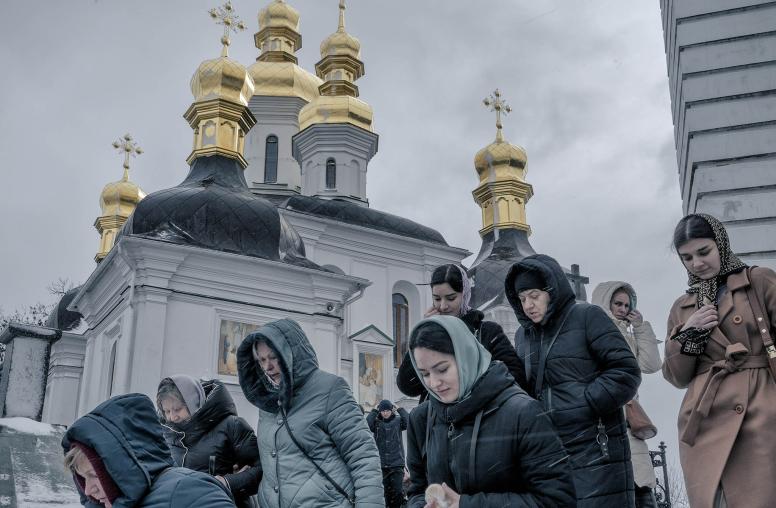Promoting Peace and Stability in the Americas through Religious Freedom
As authoritarians crack down on religious freedom, Western Hemisphere nations need to increase protection of human rights.
The Western Hemisphere is generally known for protecting freedom of religion or belief. With a few notable exceptions, the countries of the region all enshrine religious freedom at the constitutional level and protect it through laws and policies. But in recent years, authoritarian governments in South America have increasingly viewed religious actors as threats to their regime’s survival and tried to control or crush independent religious activity.

The stakes are high, as failing to protect religious freedom could produce dire outcomes for peace and stability. Western Hemisphere nations must redouble their efforts to protect this foundational right, which can prevent conflict and help protect all human rights.
The Crackdown on Religious Freedom
Of the Western Hemisphere nations under authoritarian rule, Nicaragua has arguably become the worst country for religious freedom. The Ortega-Murillo government has closed hundreds of churches, expelled dozens of priests, and jailed many clergy and laity.
Meanwhile, concerns are increasing about a new body in Venezuela that was ostensibly created to promote religious freedom but is likely to exert greater control over spiritual life in the country.
And, of course, Cuba continues to violate religious freedom standards through its draconian monitoring, onerous registration process, police raids on “illegal” churches, and the forced migration of pastors unwilling to remain silent. The repression has resulted in migration, both forced and voluntary, as persecuted believers flee to find security elsewhere.
In addition, many Latin American countries have shifted from majority Catholic to more pluralistic and secular societies. In 1910, the Pew Research Center estimates that roughly 94 percent of Latin Americans were Catholic. A little more than a century later, Pew found that Catholics only accounted for 69 percent of Latin Americans, with 19 percent now belonging to Protestant churches and 8 percent religiously unaffiliated.
This influx of new beliefs and new ways of living has created societal tensions that impact religious freedom — particularly for Indigenous communities and religious minorities. Indigenous communities, with their unique religious and belief traditions dating back centuries, have long faced geographic and cultural encroachment. But more recently, religious minorities, Indigenous religions and Indigenous communities have suffered discrimination and attacks on their members and sacred sites. While most governments reject such attacks and promote measures to address them, problems persist with access to justice, education, housing, employment and the building of worship sites.
The Existing Human Rights Framework for the Region
Despite these challenges, the region does have a robust human rights framework that is meant to protect religious freedom. The Organization of American States (OAS) was the first international organization to recognize human rights, with the American Declaration of the Rights and Duties of Man passed a few months before the U.N. General Assembly approved the Universal Declaration of Human Rights in 1948.
Later, the American Convention on Human Rights was signed in 1969 and explicitly protected religious freedom in treaty law in a way that mirrors U.N. standards. The convention also proscribes discrimination based on religion or belief, including limitations on assembly or movement.
More recently, the OAS, as an international entity, has become increasingly vocal on freedom of religion or belief. It has created partnerships and issued statements noting the importance of religious freedom, highlighted particular situations, such as in Nicaragua, and convened special meetings. Earlier this year, the OAS Secretary General Louis Almagro met with the U.N. Special Rapporteur on Freedom of Religion or Belief Nazila Ghanea to highlight the increasing importance of this right in the OAS region.
OAS member states have also collectively spoken about these issues, most recently as part of the “Resolution for the Promotion and Protection of Human Rights” that was passed at the 52nd OAS General Assembly in Lima, Peru.
A Lack of Enforcement Mechanisms
That OAS General Assembly resolution also tasked the Inter-American Commission on Human Rights (IACHR) to review religious freedom issues in the region. Previously, few cases on religious freedom have come before the commission, thus leaving few opportunities for it or the Inter-American Court for Human Rights to examine and rule on foundational freedom of religion or belief challenges.
As a result, the Inter-American system, despite being first out of the gate to enunciate human rights and religious freedom standards 75 years ago, has little jurisprudence or process to rely upon when reviewing core religious freedom violations. In fact, until recently, few OAS bodies have spoken at length about freedom of religion or belief at all.
And even when they do, as the IACHR report released in February 2024 shows, the issue still feels novel. The IACHR report summarized the parameters of the right to religious freedom in the context of Inter-American and U.N. standards but spent little time speaking about core violations relating to freedom of religion or belief. The authors instead devoted more attention to how religious freedom issues intersect with other human rights concerns — which, though not necessarily problematic, took attention away from the freedom of religion and belief itself and missed an opportunity to speak about challenges straightforwardly. As the commission’s press release stated: “In preparing the study, gender and ethnic-racial approaches were applied, as well as the perspective of intersectionality, in order to account for the different realities that groups face in the exercise of this human right in the region.”
Unfortunately, this approach appeared to pit religious freedom in opposition to other human rights concerns. It is a false dichotomy, as religious freedom is a human right. Certainly, tensions exist between religious actors and rights of conscience regarding issues of marriage, life, bodily autonomy, LGBTQ+ discrimination and other issues. These tensions were outlined in the report and its dissents. However, the surprising procedural decision not to publish the “explanation of vote” by dissenting commissioners appears to run counter to the commission’s rules of procedure. The decision lacked transparency and limited access to the arguments among commissioners, a regrettable occurrence, as, ironically, freedom of thought, conscience, religion or belief should create space for these debates.
Improving Policies on Religious Freedom
Regardless, the report elevated how Inter-American standards protect religious freedom. With the many challenges across the region, there is a need for increased engagement on religious freedom by the OAS as an organization, by its member states, and by the various components of the Inter-American system.
To assist, USIP, in collaboration with Pepperdine University and Brigham Young University, convened OAS delegations and OAS experts earlier in the year to explore areas of agreement. Subsequent discussions with civil society recently took place as well. And while promoting religious freedom reflects a commitment to human rights, it is also in the security interest of the United States to work through the OAS to ensure the nations of the Western Hemisphere continue to protect this right, as it ensures stability, positively manages diversity, and prevents the growth of extremism, which USIP has highlighted before.
From these conversations, participants agreed on the need for all actors working to advance human rights in the hemisphere — governments, multinational organizations, civil societies and faith-based organizations — to find ways to foster consensus approaches that promote religious freedom in the region and defend religious minorities.
USIP and its partners are planning follow-up conversations focusing on the OAS General Assembly's human rights resolution. The resolution identified practical, needed and consensus areas of activity, such as minority rights and Indigenous beliefs, access to worship and protection of meeting places, and combatting discrimination based on religion or belief. In addition, education about living together in diversity was a key takeaway from USIP’s conversations, and USIP’s Global Campus provides resources for peacemakers to engage in religiously diverse societies, in addition to reports about educating youth in schools.
With changing dynamics and increasing pluralism across the OAS region, these practical approaches will be vital to address the threat of the politicization of religion. Consequently, the OAS must continue to expand its efforts to protect religious freedom by promoting more rights for more people and recognizing human dignity, which is the basis for peace in pluralistic societies. Work remains to ensure everyone in the Americas enjoys freedom of religion or belief in an unhindered way, without fear of discrimination or violence.



